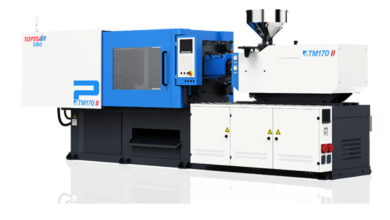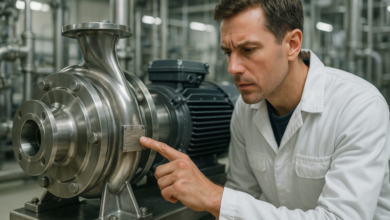Exploring the Fluorescence Spectroscopy Instrument

Significance of Fluorescence Spectroscopy Instruments in Laboratories
A fluorescence spectroscopy instrument is a fundamental tool for scientific laboratories engaged in chemical, biological, and pharmaceutical research. This equipment measures the emission of light from molecules after excitation by specific wavelengths, providing critical insights into molecular structures, interactions, and concentrations.
The accuracy and sensitivity of a fluorescence spectroscopy instrument make it essential for experiments requiring precise detection of fluorescent compounds. Laboratories depend on these instruments for reliable and reproducible data in various analytical and research applications.
Principles Behind Fluorescence Spectroscopy
Fluorescence spectroscopy relies on the phenomenon where molecules absorb light at one wavelength and emit light at a longer wavelength. A fluorescence spectroscopy instrument detects and quantifies this emitted light to analyze the sample’s chemical and physical properties.
Understanding the excitation and emission spectra allows scientists to identify compounds, study molecular interactions, and measure concentrations with high sensitivity. The instrument’s ability to detect low levels of analytes makes it suitable for diverse laboratory applications.
Applications of Fluorescence Spectroscopy Instruments
Fluorescence spectroscopy instruments are widely used across multiple research fields. In biochemistry, they help study proteins, nucleic acids, and enzyme kinetics. Environmental laboratories utilize them to detect pollutants and monitor water quality. Pharmaceutical research relies on these instruments for drug development, quality control, and formulation analysis.
Additionally, fluorescence spectroscopy instrument to identify biomarkers, monitor disease progression, and perform diagnostic assays. Their versatility, sensitivity, and precision make them indispensable in modern laboratories.
See also: Building Engaging Learning Environments with EdTech Software
Features to Consider When Selecting an Instrument
Choosing a suitable fluorescence spectroscopy instrument depends on several critical factors. Sensitivity, wavelength range, resolution, and signal-to-noise ratio are key performance indicators. Advanced instruments offer multiple excitation and emission channels, automated sample handling, and integrated software for data acquisition and analysis.
Durable construction, reliable optics, and easy maintenance ensure long-term performance. Selecting an instrument from a reputable supplier guarantees access to high-quality equipment and essential support services.
Maintenance and Calibration
Regular maintenance and calibration are vital to ensure accurate performance of a fluorescence spectroscopy instrument. Standard reference materials are used to calibrate the system, confirming the validity of measurements. Routine cleaning, optical alignment, and software updates contribute to consistent results.
Suppliers often provide maintenance contracts and technical support, helping laboratories maintain optimal operation. Proper handling and adherence to manufacturer guidelines prevent contamination, system failure, and inaccurate data.
Technological Advancements
Modern fluorescence spectroscopy instruments incorporate technological innovations that enhance usability and measurement capabilities. Features such as time-resolved fluorescence, fluorescence anisotropy, automated sample loading, and real-time data processing improve laboratory efficiency and accuracy.
Advanced instruments allow researchers to study dynamic processes, molecular interactions, and structural changes with greater detail. These improvements expand the range of possible experiments and improve data reliability.
Comparing Fluorescence Spectroscopy to Other Techniques
Fluorescence spectroscopy instruments provide high sensitivity and specificity, complementing other analytical techniques such as UV-visible spectroscopy, chromatography, and mass spectrometry. While each method has unique strengths, fluorescence spectroscopy excels in detecting low-concentration compounds and monitoring real-time molecular changes.
Combining fluorescence spectroscopy with other analytical tools enhances laboratory capabilities, providing comprehensive insights into sample composition and molecular behavior.
Supplier Reputation and Support Services
Selecting a reliable supplier for a fluorescence spectroscopy instrument is critical. Established suppliers with proven track records, positive customer feedback, and certifications are more likely to deliver dependable systems.
Access to technical support, maintenance services, and calibration assistance ensures long-term instrument performance. A trusted supplier can also provide training for laboratory staff, helping maintain accuracy and operational efficiency.
Cost and Long-Term Investment
The initial cost of a fluorescence spectroscopy instrument may be significant, but evaluating the long-term value is crucial. High-quality instruments offer durability, reproducibility, and lower operational costs over time.
Suppliers may offer service contracts, consumable replacement plans, or flexible purchasing options. Considering the total cost of ownership, including maintenance, energy consumption, and consumables, ensures a sound investment for the laboratory.
Sustainability and Laboratory Efficiency
Modern fluorescence spectroscopy instruments are designed with energy efficiency and environmental sustainability in mind. Efficient light sources, low-energy components, and automated operation reduce power consumption and minimize waste.
Sustainable instruments contribute to greener laboratory practices while maintaining reliable performance. Energy-efficient operation and low downtime improve overall workflow and productivity.
Conclusion
A fluorescence spectroscopy instrument is an essential tool for laboratories requiring sensitive and accurate analysis of molecular structures and interactions. Understanding its principles, applications, maintenance requirements, and technological features helps researchers select the right instrument for their needs.
Investing in a high-quality fluorescence spectroscopy instrument ensures reliable data, reproducible results, and long-term operational efficiency. Partnering with a reputable supplier provides technical support, calibration services, and access to the latest technologies, enabling laboratories to conduct precise and innovative research with confidence.





